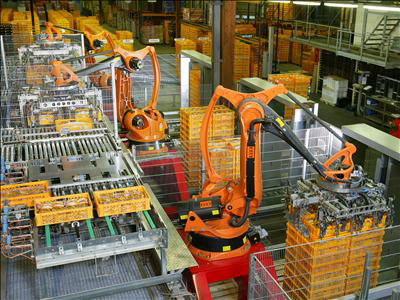Global manufacturing and supply chains were severely disrupted by the COVID-19 global pandemic, forcing companies to adapt and plan for a new business reality.
The newly released 2021 State of Manufacturing Report from Fictiv reveals an industry that is already quickly rebounding with investments in digital transformation aimed at improving speed, resilience and sustainability. While areas of concern persist, most report that lessons from the pandemic have paved the way for new innovations.
Key takeaways include:
- Industry leaders believe now is the time to accelerate the pace of change with 95% saying the pandemic has had long-term effects on their business and that same number (95%) agreeing that digital transformation is essential to their company’s future success;
- The pandemic laid bare deep weaknesses in supply chains as 94% of survey respondents report concerns about their current supply chains and 92% say their supply chains act as barriers to new product innovation; and
- As companies move into a post-pandemic era they are looking to future proof their manufacturing with 62% pursuing a re-shoring strategy, 89% reporting that sustainable manufacturing is a growing priority, and 84% having turned to on-demand manufacturing as a solution.
“The overriding takeaway from this year’s report is that the pandemic served as a catalyst to turn emerging digital ideas into strategies that are now irrevocably changing supply chains,” said Fictiv CEO Dave Evans. “Companies moved quickly and decisively to solve short term problems but recognized that the limitations of their current supply chains required long-term investment and innovation. Looking ahead, industry leaders are nearly unanimous in their expectations that those digital investments will help them build faster, greener, and more resilient supply chains.”
Conducted with Dimensional Research, the sixth annual manufacturing industry report polled hundreds of senior manufacturing and supply chain decision makers at companies producing medical device, robotics, automotive, aerospace, and consumer electronics products. A number of themes emerged from the report:
Right-shoring vs Re-shoring
- Among those industries with plans to onshore in 2021, 80% of medical device companies report it is a key strategy, followed by 67% in robotics, 61% in automotive, and 45% in consumer electronics;
- 55% report that workforce training is the number one barrier to increasing their US-based manufacturing footprint, followed by cost (43%), insufficient capacity (36%), and lack of access to needed technologies compared to global suppliers (31%);
- Only 10% of survey respondents report they see no barriers to manufacturing in the US.
Supply Chain Concerns Stifle Innovation
- Externally, respondents reported that slow feedback loops with manufacturing partners as well as difficulty sourcing fast, high quality options to manufacture low-volume builds are among the top NPI barriers;
- Internally, 45% report that rigid internal processes hamper their team’s ability to innovate;
- Moreover, 97% of companies report that supply chain management consumes a significant amount of employees’ time;
- Eighty-one percent (81%) report that quality issues in their supply chain have resulted in cost overruns in the past year;
- Fifty-five percent (55%) report that their existing supply chain presents IT security risks and 42% report concerns around IP protection risks.
Workforce Challenges
- Limited budgets are a key barrier to hiring new innovation talent for 45% of respondents;
- Forty-four percent (44%) report difficulty hiring manufacturing talent with the necessary digital expertise;
- Ninety-five percent (95%) of companies agree that expert guidance around manufacturing feasibility for new product innovations would be of great benefit.
Power of On-Demand Manufacturing
- Of the 84% of companies using on-demand solutions, 100% reported a benefit from this strategy;
- The top three advantages were reported as improved quality (62%), transparency (61%), and speed (60%).
“The pandemic also served as a proving ground for new ideas,” said Fictiv COO Jean Olivieri. “A super majority of those polled said that their comfort level with work from home influenced their positive attitudes towards flexible manufacturing arrangements. With 84% having used on-demand manufacturing solutions over the past year, it’s obvious the industry is becoming less reliant on the ownership of physical spaces and wholly owned processes.”
SC
MR


Latest Supply Chain News
Latest Resources

 Explore
Explore
Business Management News
- Inflation continues to have a wide-ranging impact on supply chains
- Strategic cost savings differ from cutting costs
- Planning fatigue may be settling in
- Inflation, economic worries among top supply chain concerns for SMBs
- April Services PMI declines following 15 months of growth, reports ISM
- Attacking stubborn COGS inflation with Digital Design-and-Source-to-Value
- More Business Management
Latest Business Management Resources

Subscribe

Supply Chain Management Review delivers the best industry content.

Editors’ Picks





